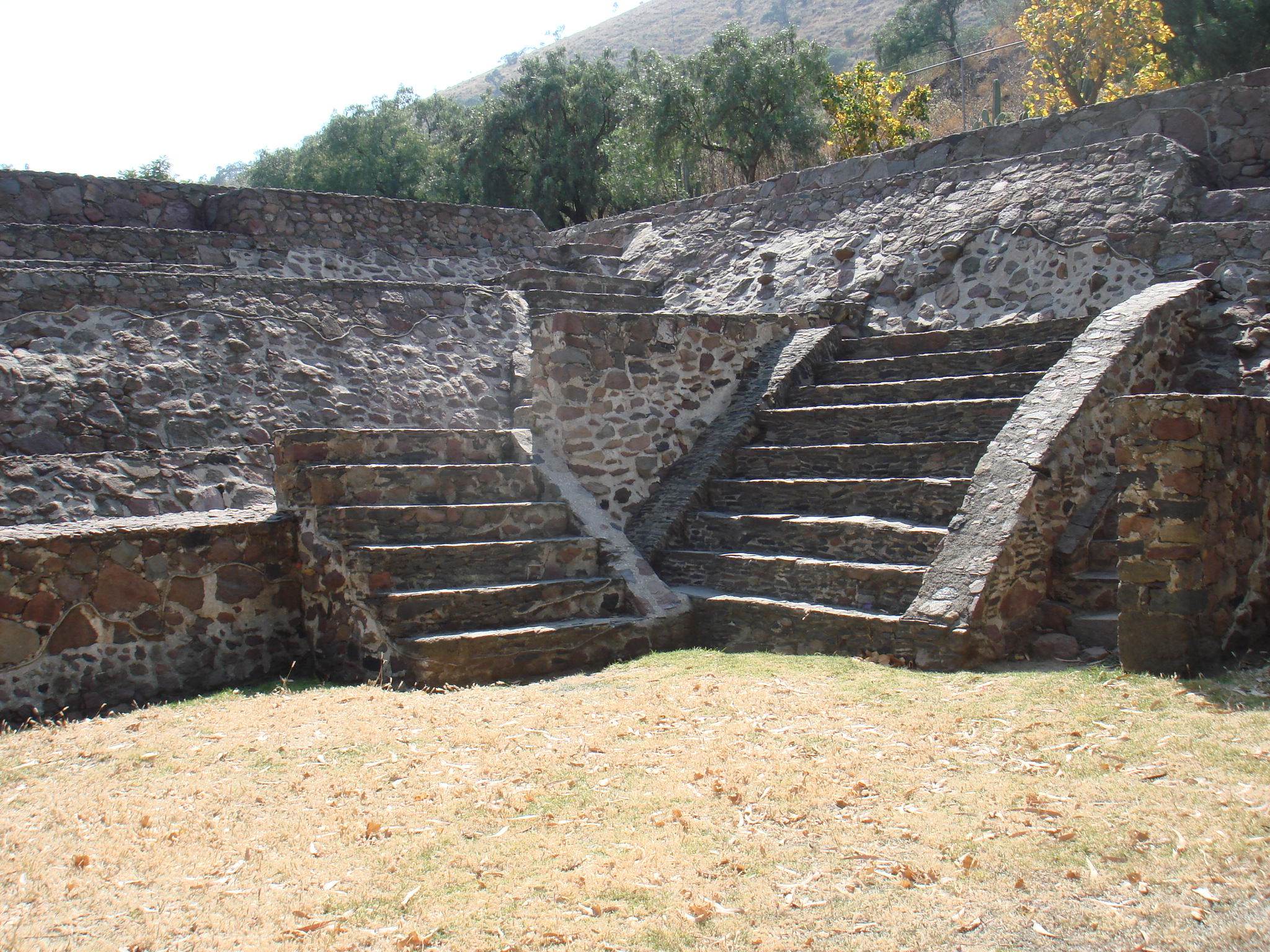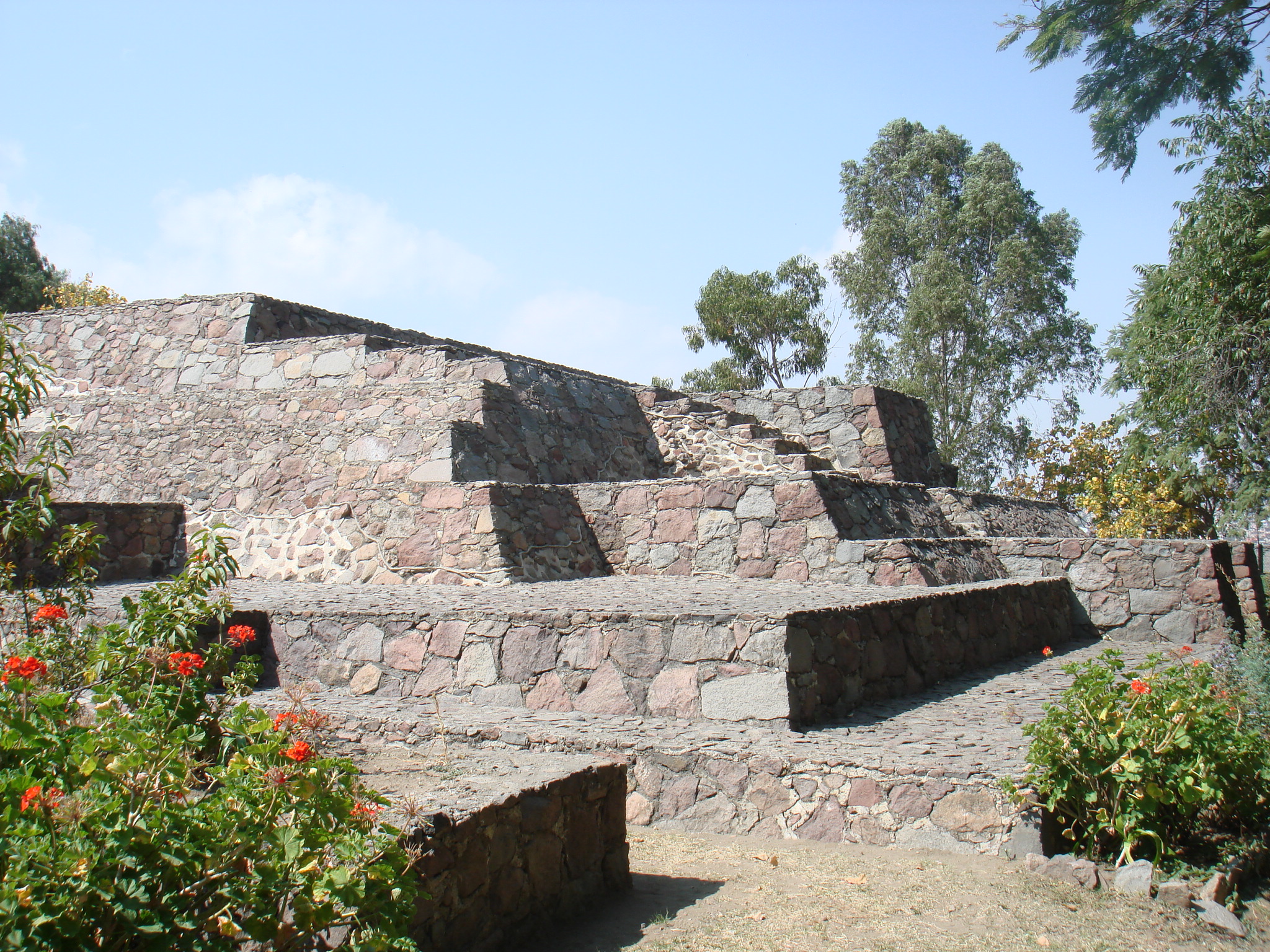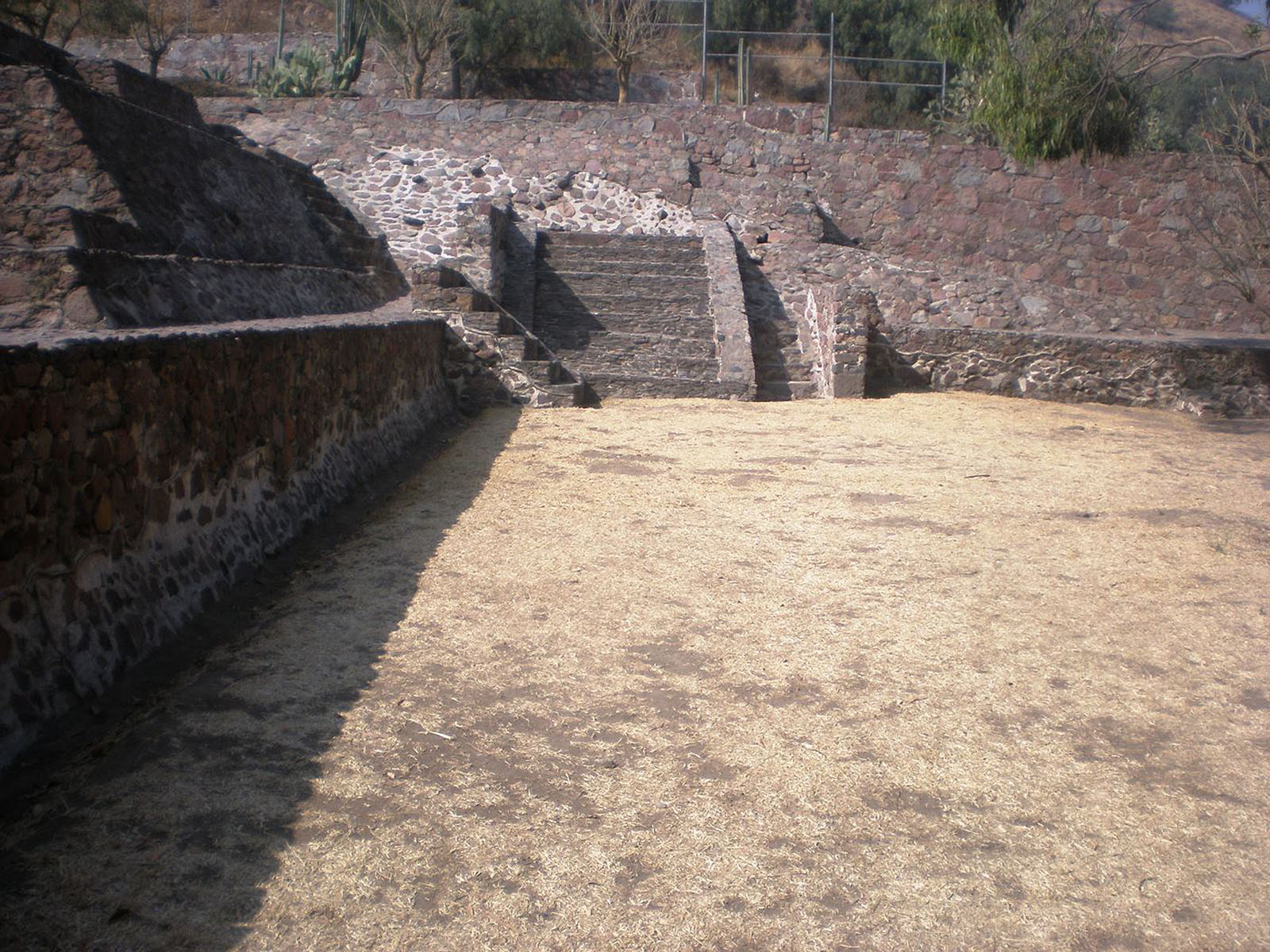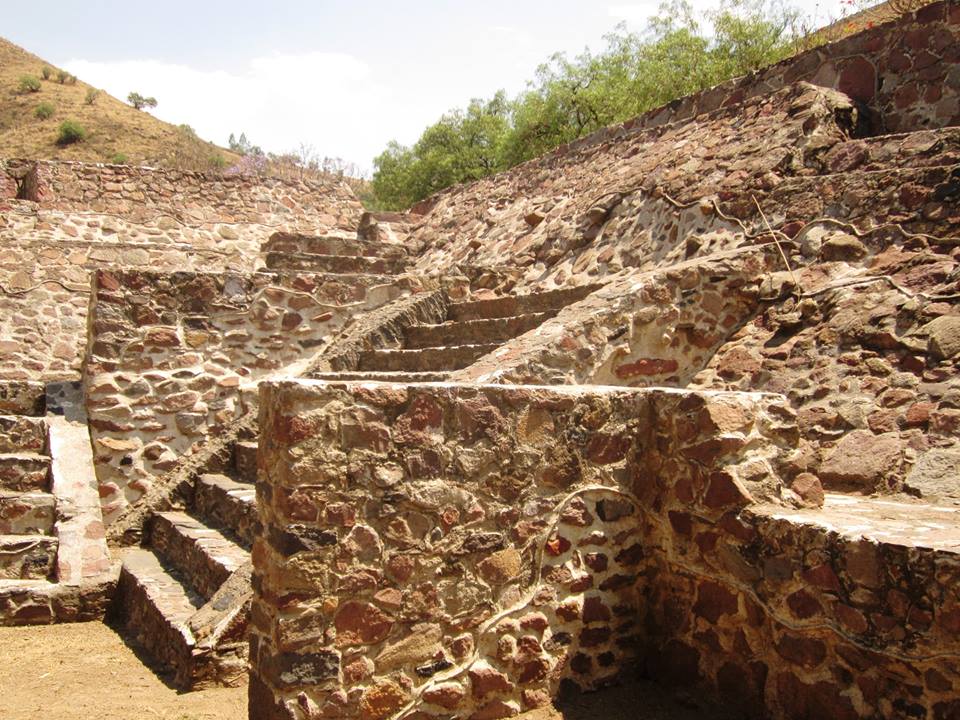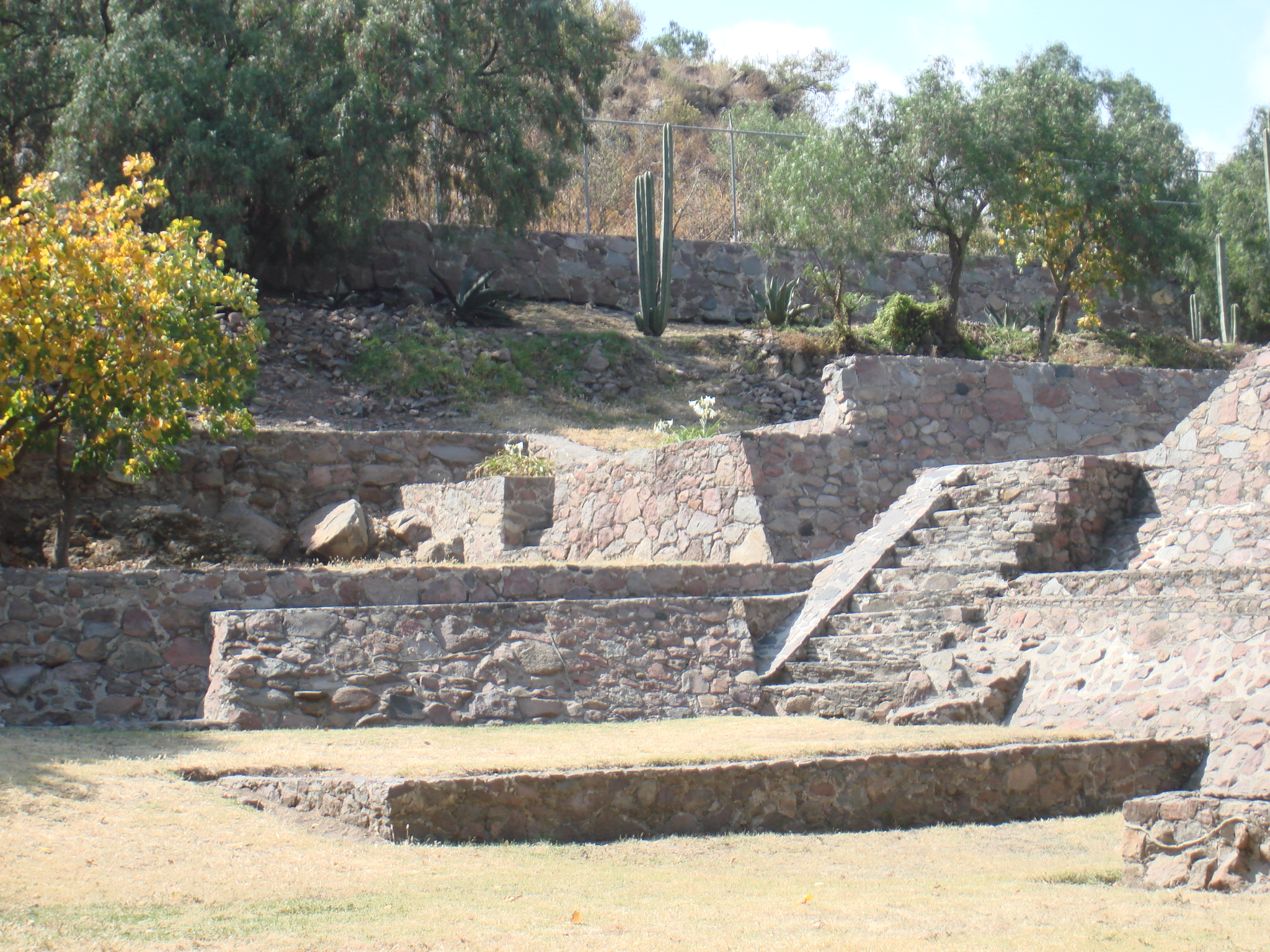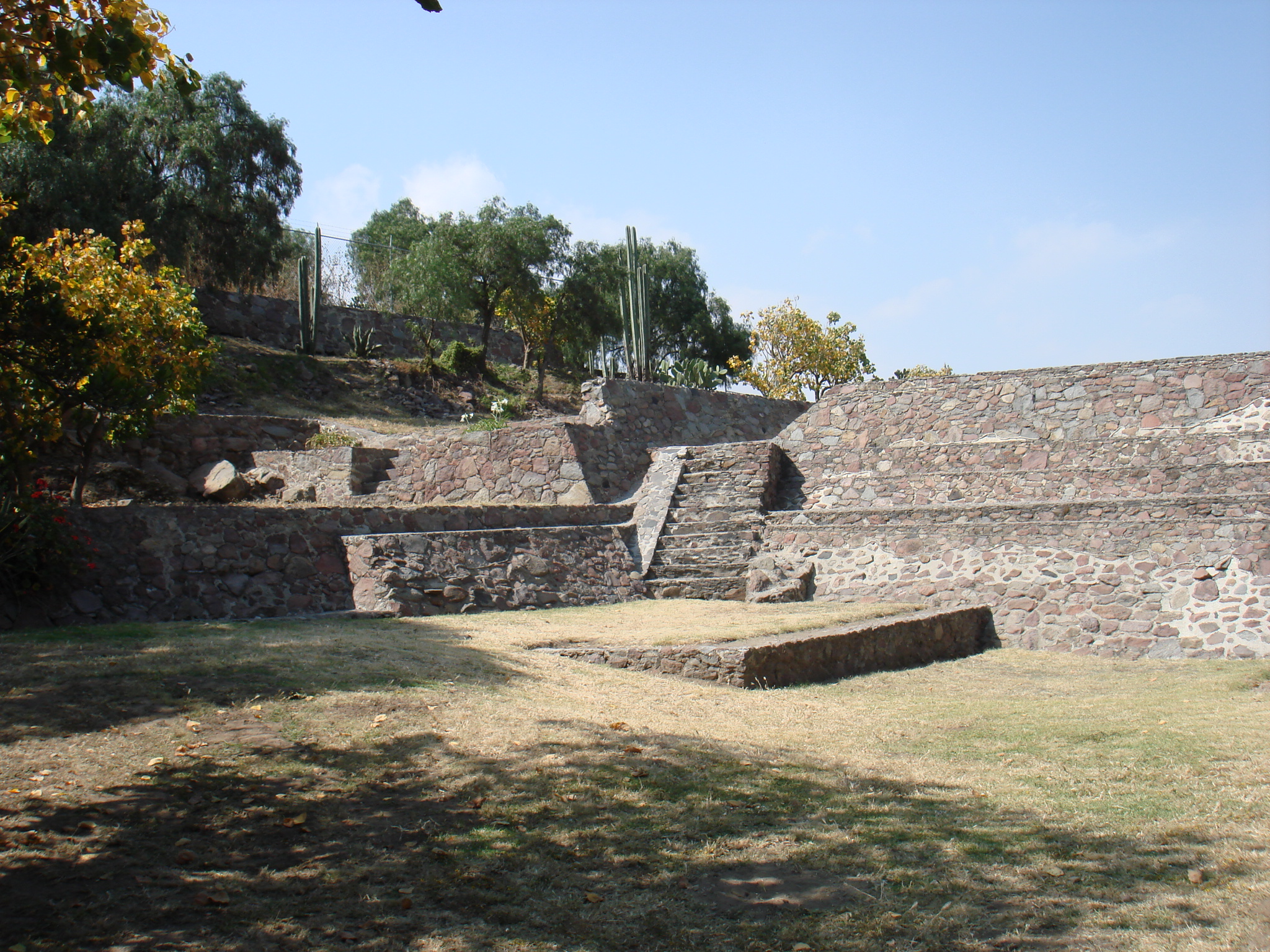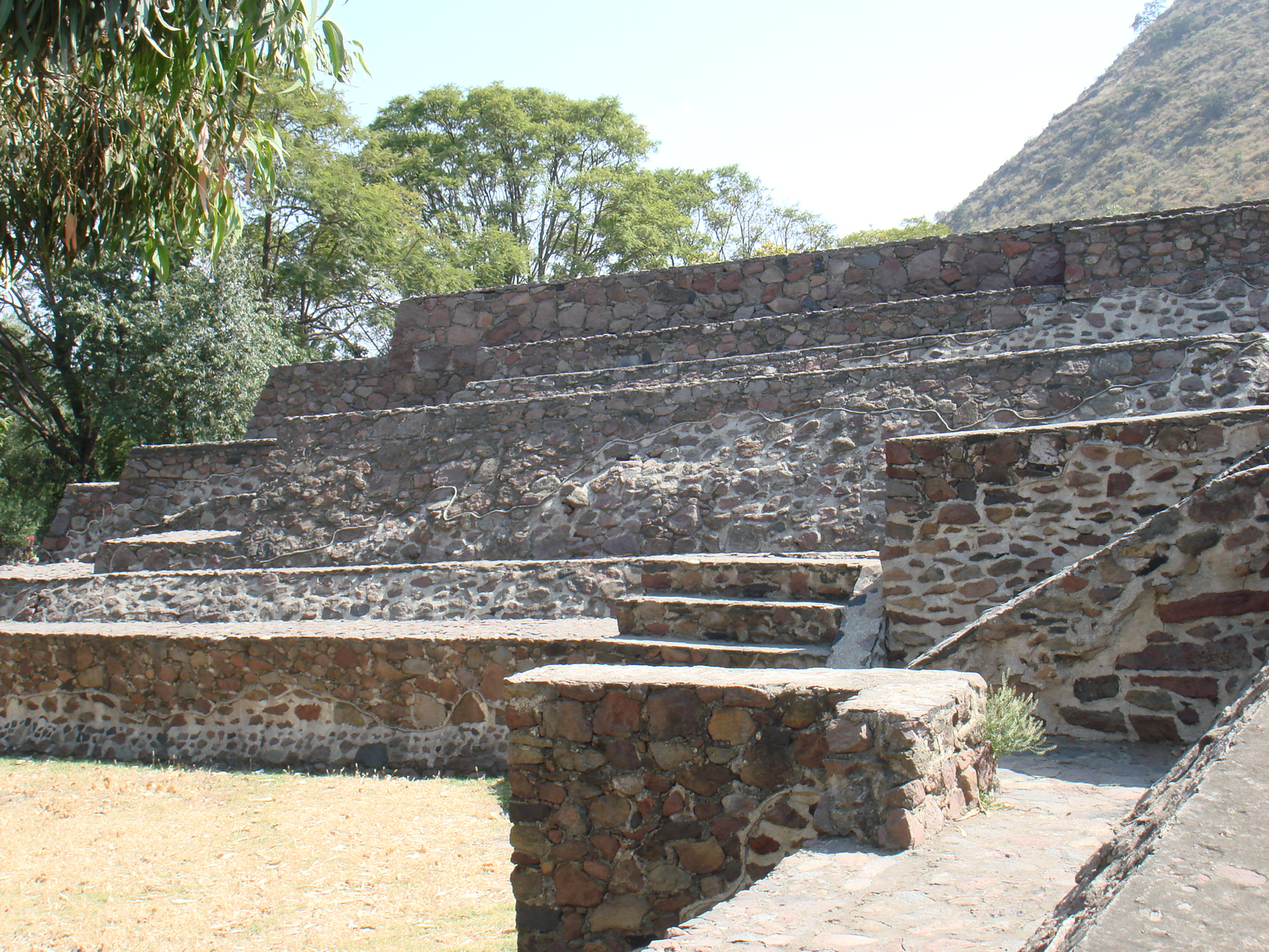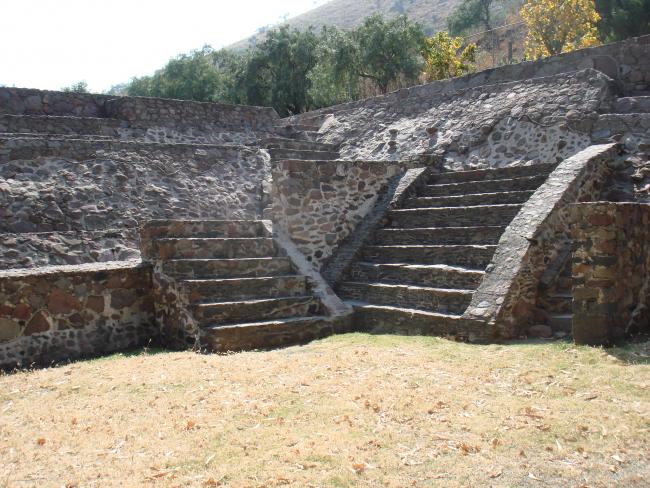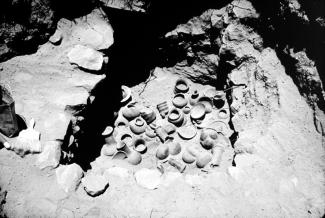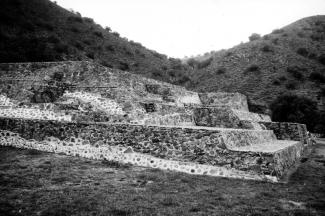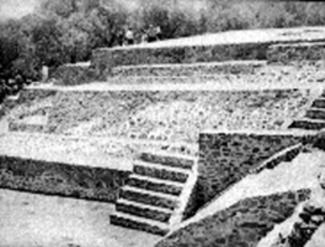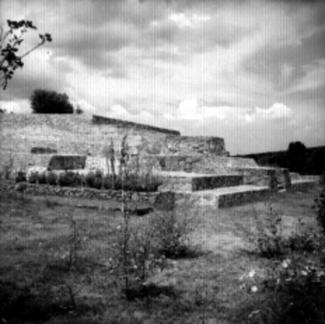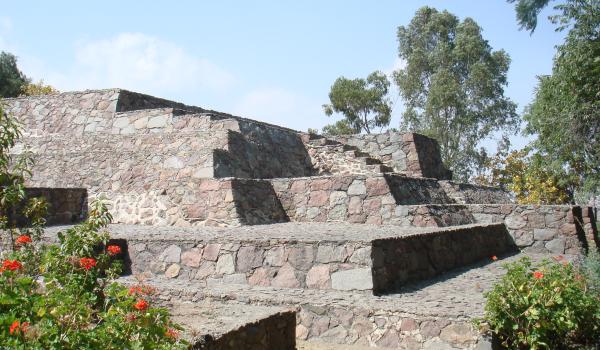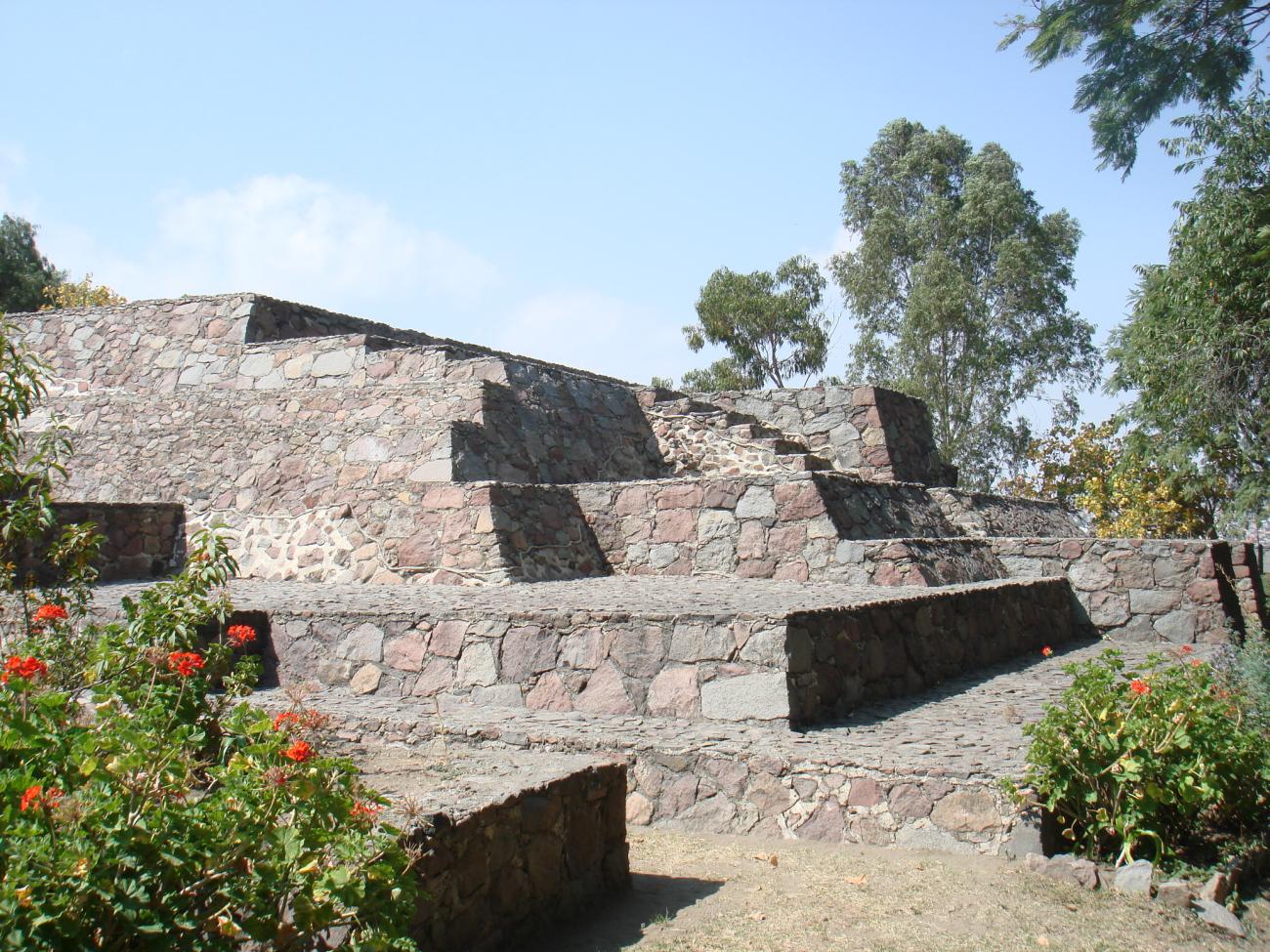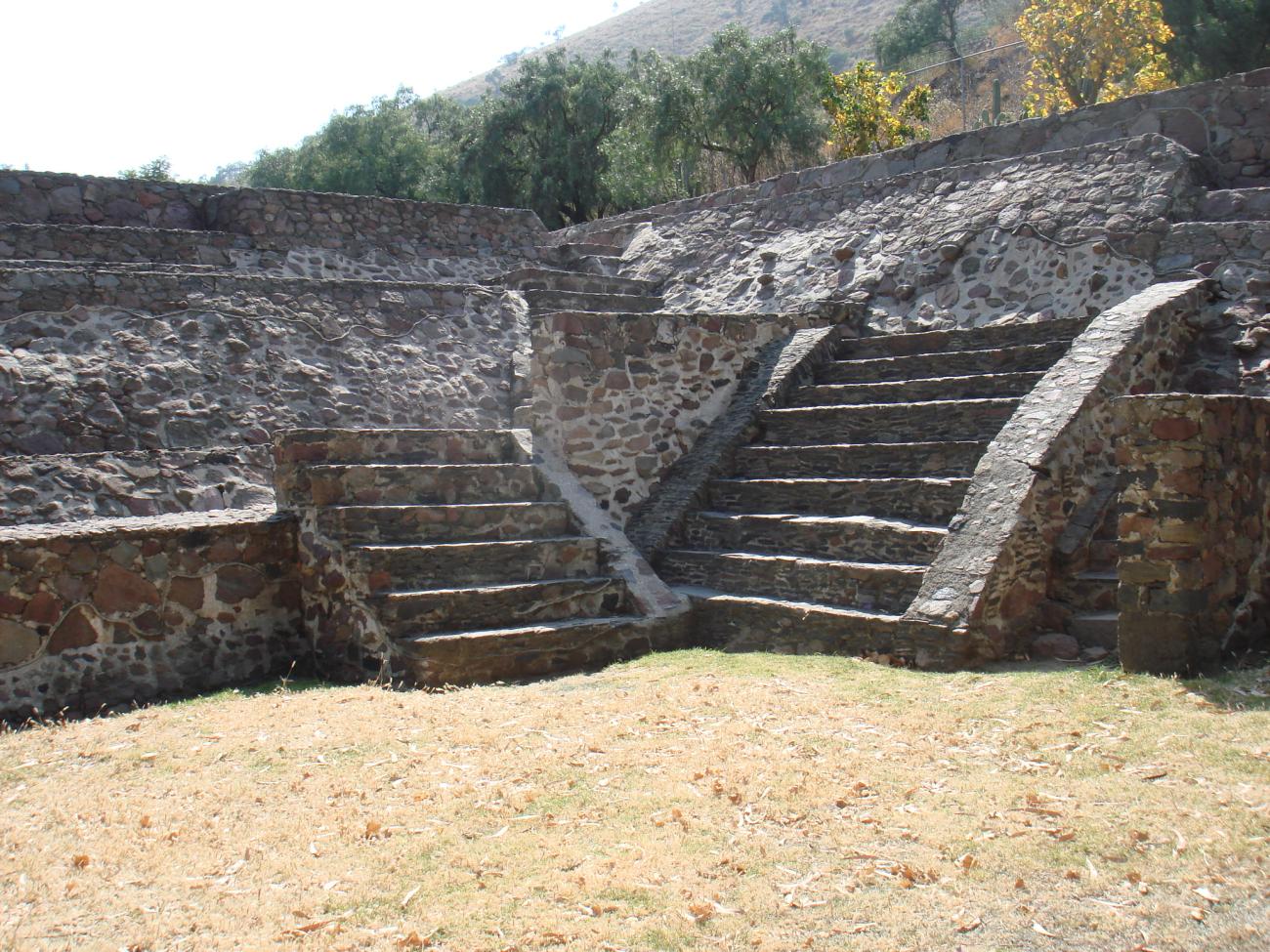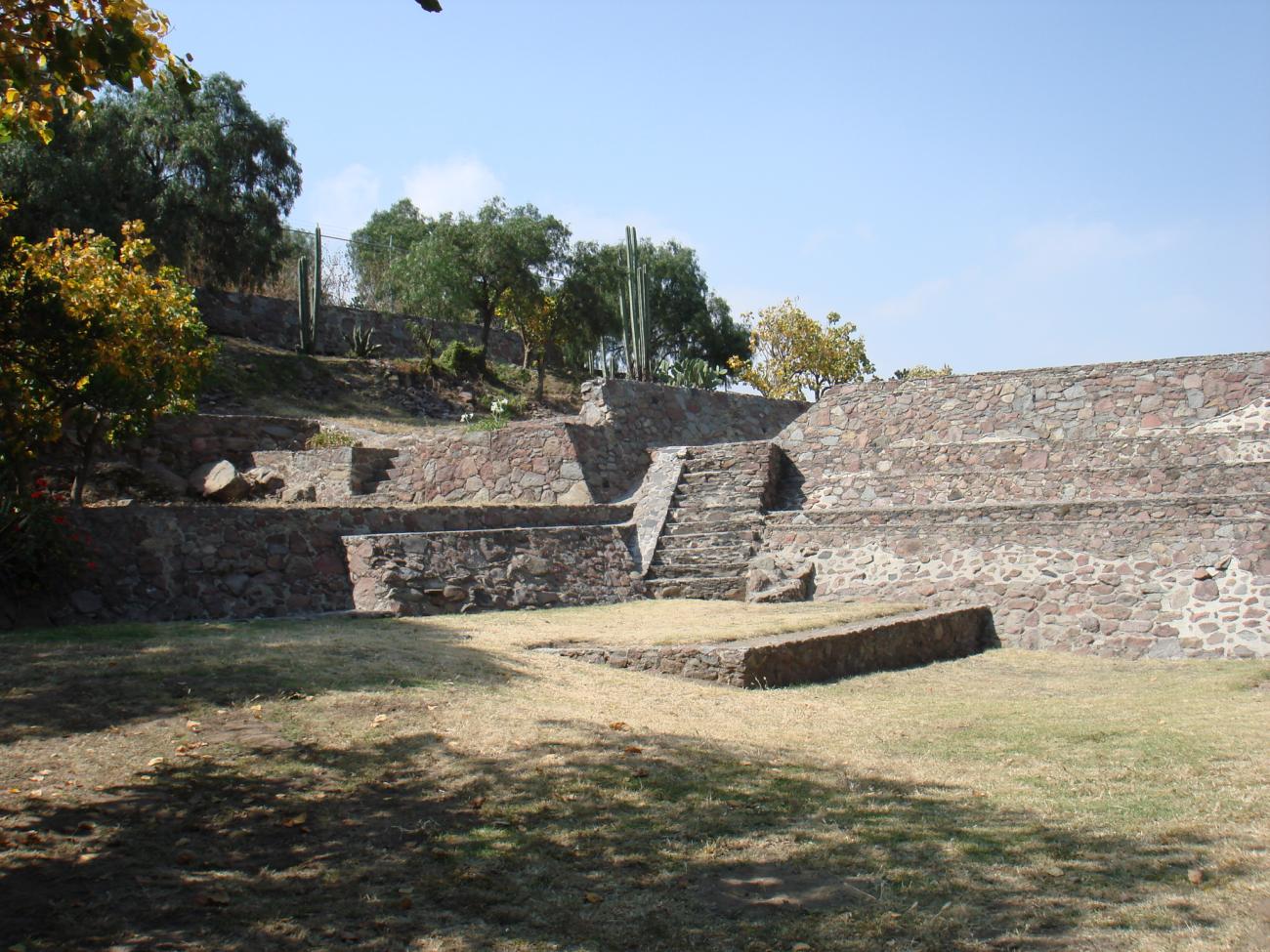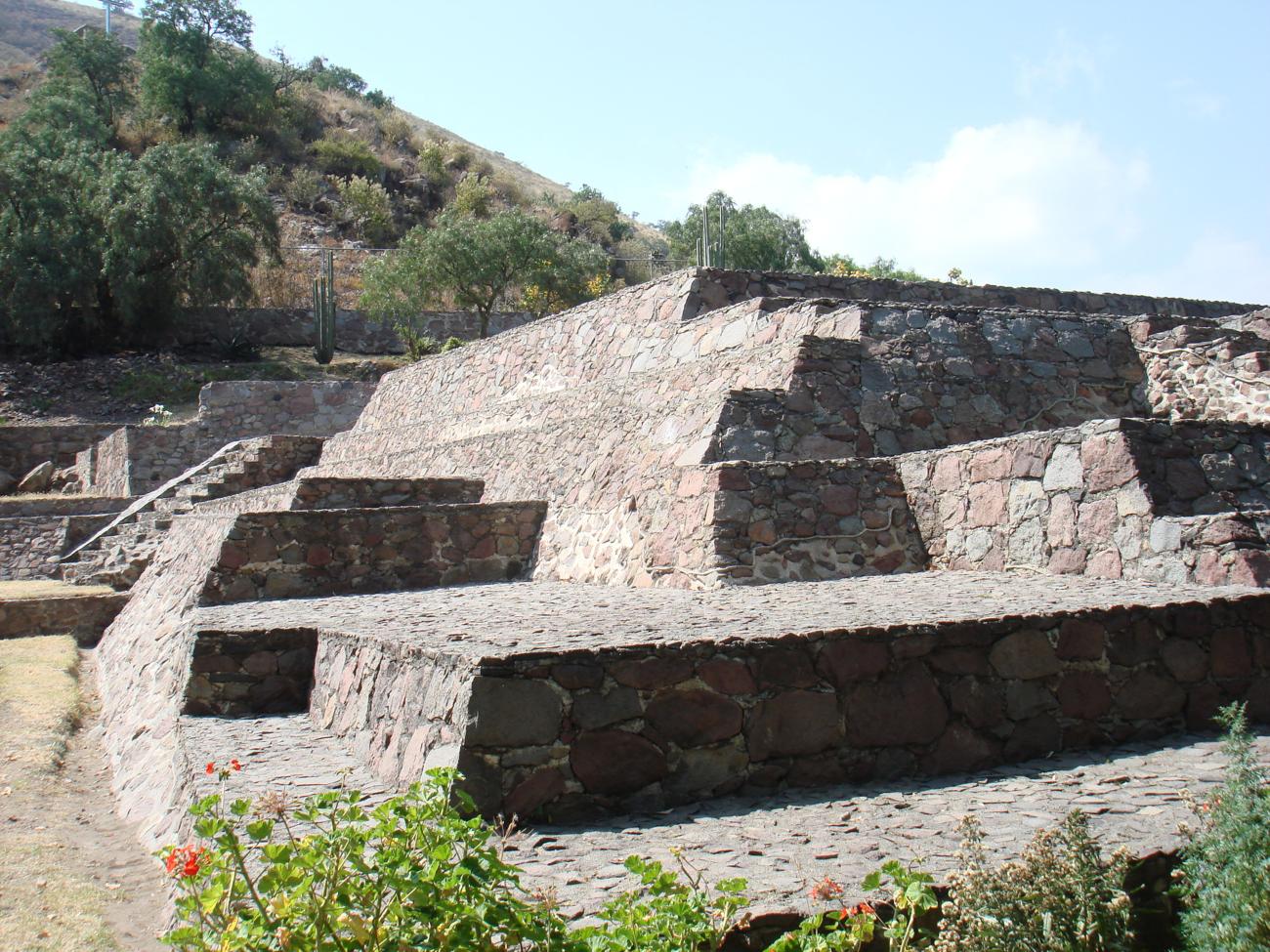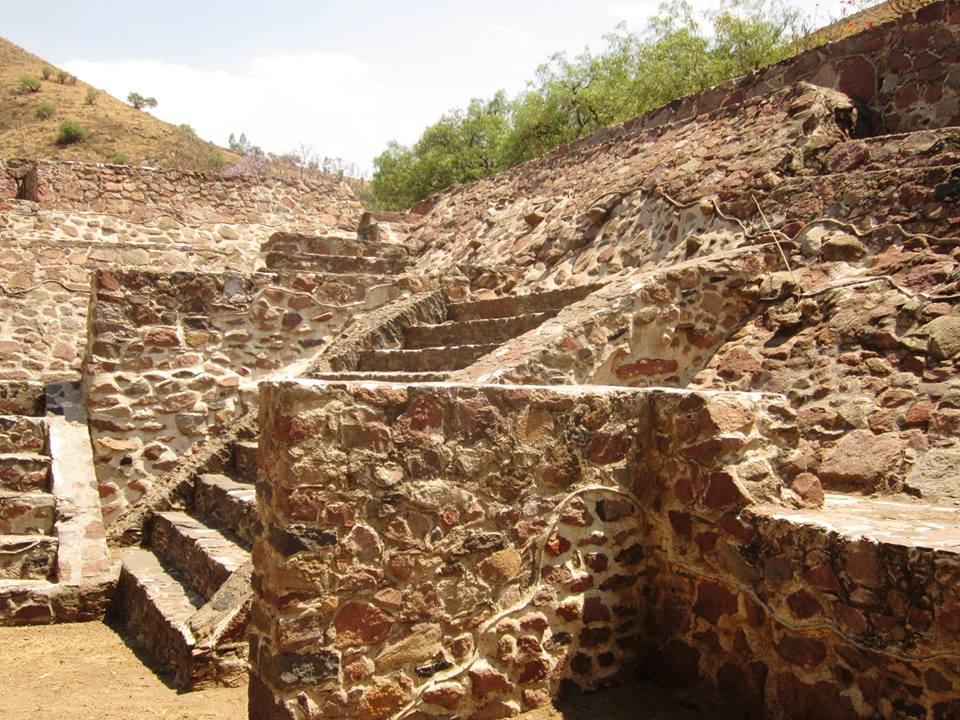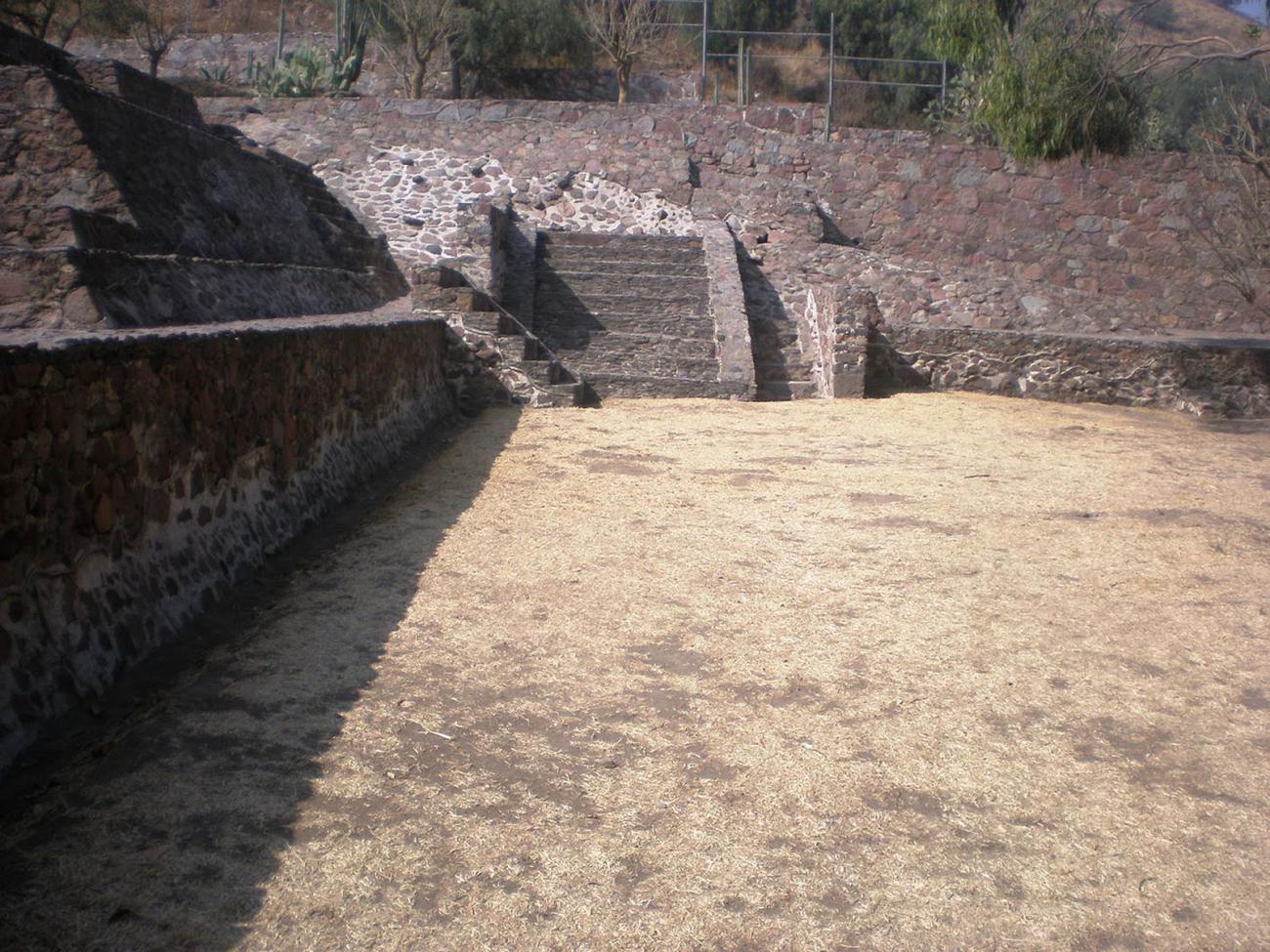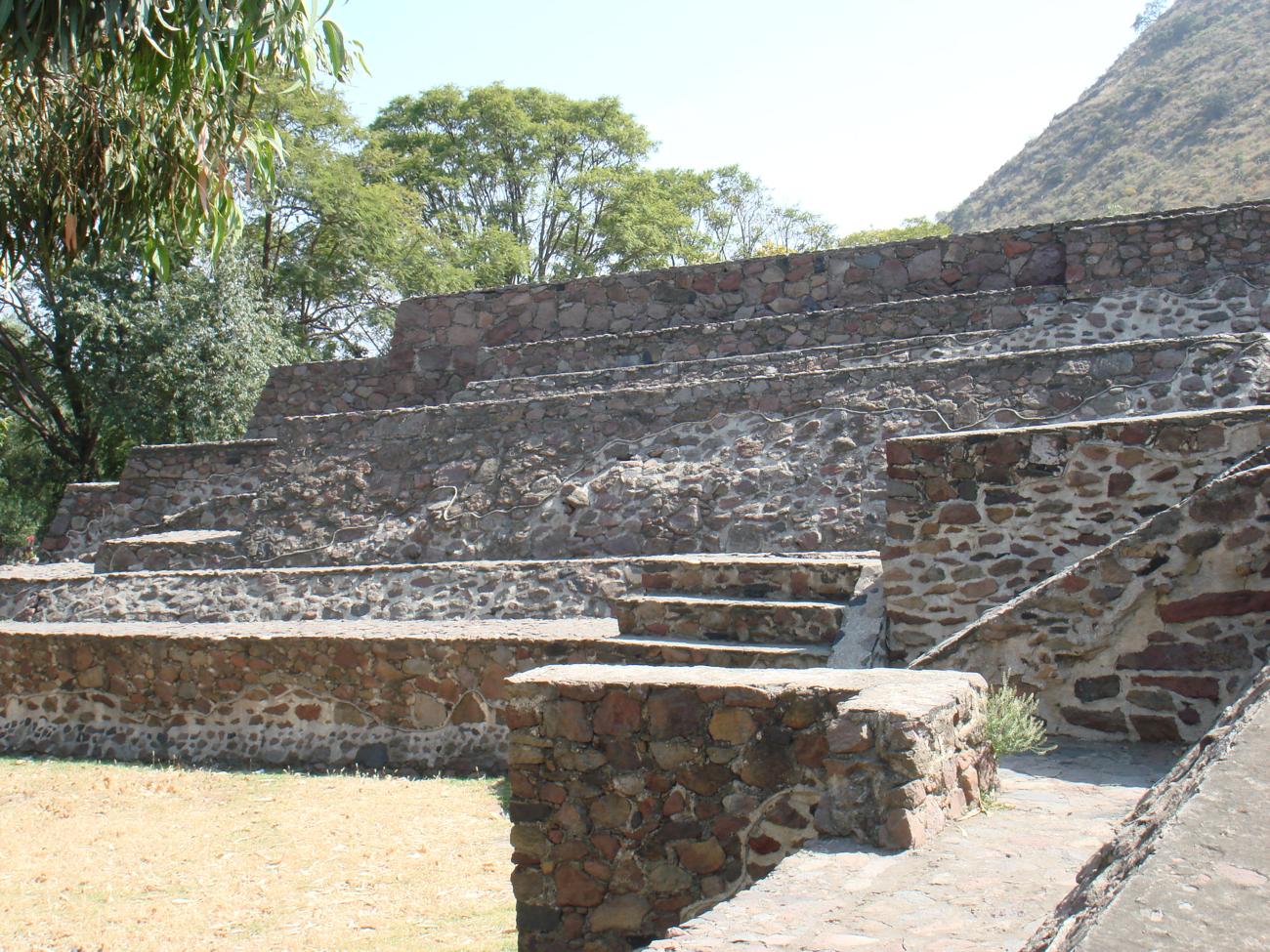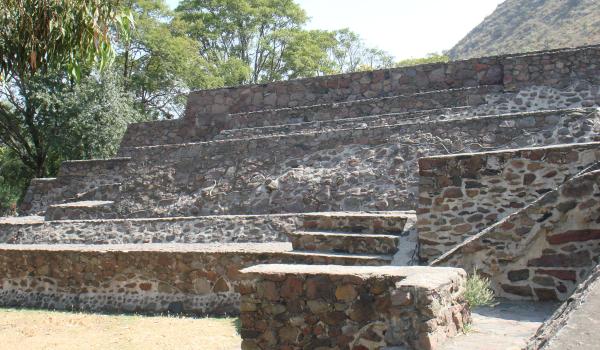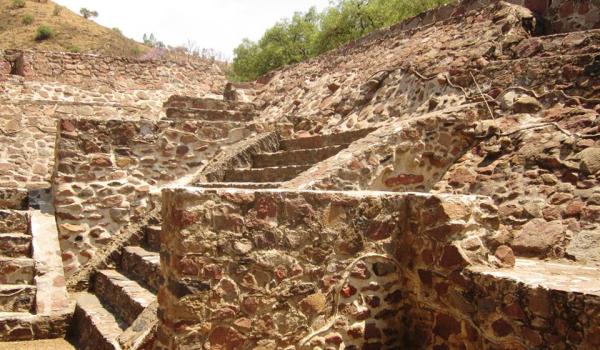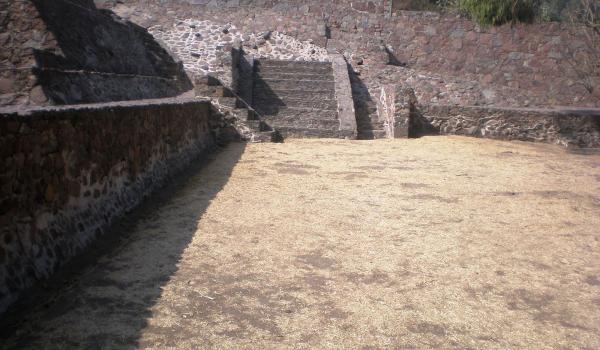The Tlapacoya archeological site is in the town of Santa María Tlapacoya, a municipality of Ixtapaluca in the southeast of the State of Mexico. The pyramid built on the side of the Cerro del Elefante is the highlight. Traces of the first inhabitants of the Valley of Mexico have been found in the surrounding area. These were from the Archeolithic period from 3000 to 2000 BC. Agricultural groups arrived on the north side of the hill during the Formative period (2000 BC-200), reaching their peak in the Late Formative (400 BC-200).
After 100 BC it is possible that a large part of the population migrated to Teotihuacan, which reduced their influence in the south of the Mexico basin. However Tlapacoya was not completely abandoned because ceramic burial offerings from the Classic period have been found.
The pyramid was built with a series of platforms where there is evidence of three building stages with stairways located on three of its sides. Three tombs with rich offerings of ceramic vessels, figurines and adornments, as well as objects made from obsidian, serpentine (a greenish stone nearly as hard as marble) and jade, which denote social differentiation and the sumptuary goods found in the offerings are evidence of relations with groups in the west and south of Mexico.




